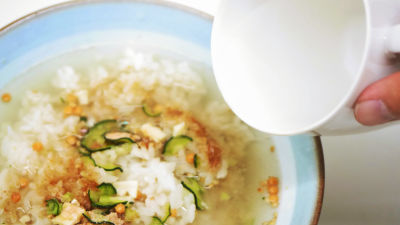What is the universal seasoning "roasted sake" in Edo which was used before the soy sauce epidemic? I tried comparing two species

Add plum vinegar and kelp soup to boiled sake "Roasted wine"Has been used as a versatile seasoning since the Edo era. There are sushi noodles, salt is about half of soy sauce and reduced salt specification, it can be made use to various dishes such as sashimi, egg rice, simmered dish. How does it taste like? So, I purchased it actually and tried it.
Sake (sprinkle) · small - Ginza Mikawaya
http://www.ginza-mikawaya.jp/?pid=19707571
Roasted sake | Chayono | Kohara Honkei Online shop
https://www.k-shop.co.jp/kayanoya/seasoning/irizake/
There are two kinds of roasted sake purchased this time. The left is the roasted sake of Ginza Mikawaya, the right is the roasted sake of Chaya.
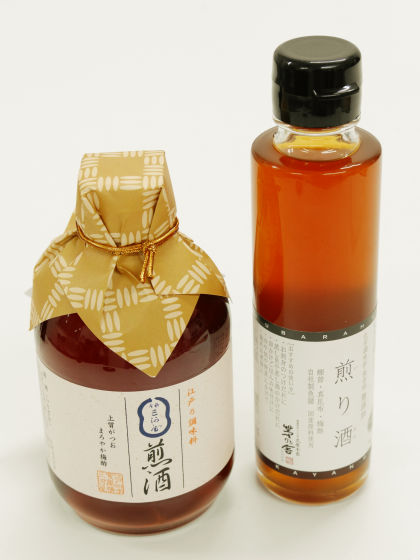
Brewed liquor of Ginza Mikawaya is small size · 300 ml things including tax 756 yen.
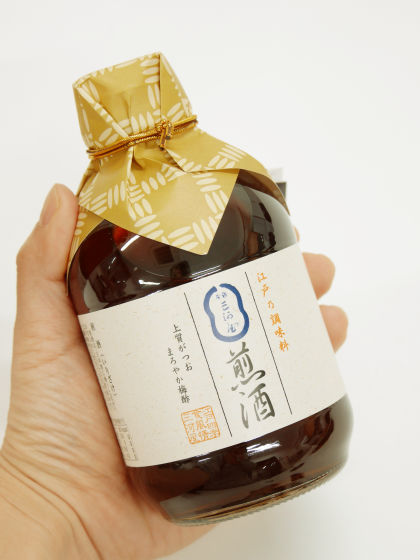
Looking at the raw material name, it continues with plum vinegar · soy sauce, bonito extract, sake, sugar, glucose, konbu extract.
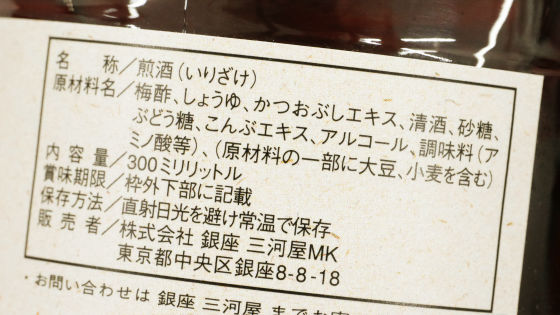
The calorie is 90 kcal per 100 ml.
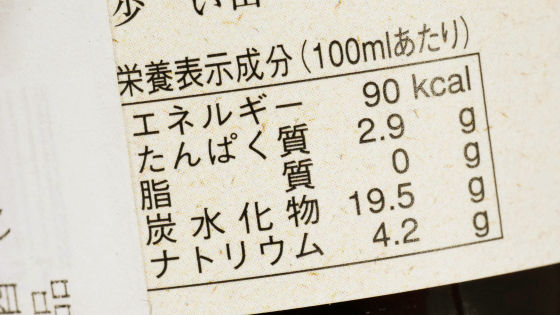
On the other hand, roasted sake in Kayono is 540 yen including tax 150 ml. The price per 100 ml is somewhat higher in Kayono.
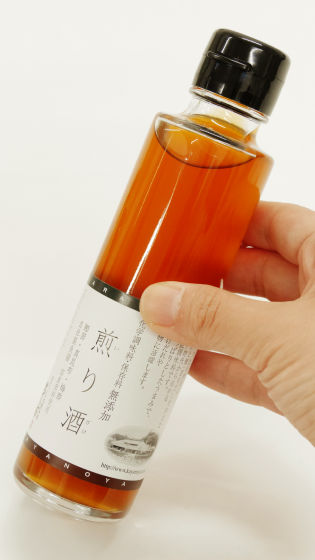
The same thing that plum vinegar comes to the head of the raw material name is the same, but after that it is sake, water syrup, wheat fermented seasoning, sugar, bonito, salt, rice fermented seasoning, yeast extract, soy sauce, fish sauce (konbu) It is a boiled sardine (sardines), baked chopsticks, along with bonito extract, it is quite different from Mikawaya.
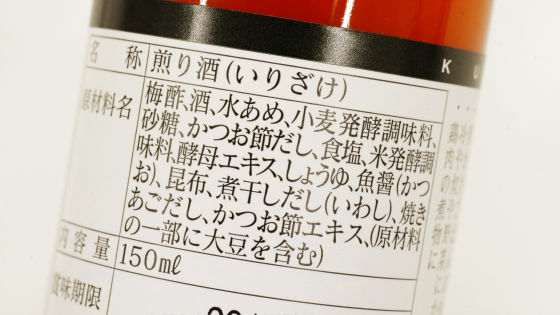
First of all, we will try tasting as it is tasting. The left is Ginza Mikawaya, the unassumed is Chinho.
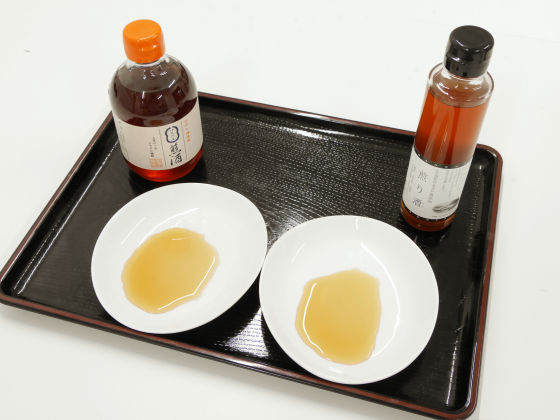
When I put it in a dish, the color is almost the same.
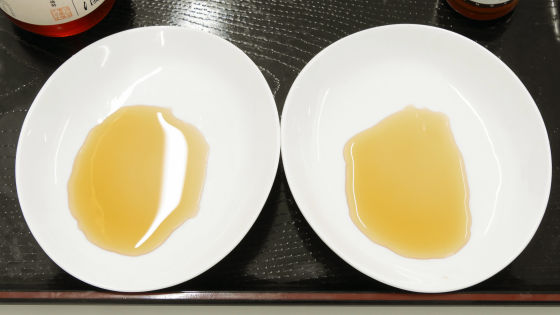
First of all, tasting from Ginza Mikawaya. At the moment of pouring both roasted sake into the plate, a sweet smell spreads swiftly, but Ginza Mikawaya will then leave a scent like soy sauce. Even though I licked it, I flew for a moment as "Shiny soy sauce?", Afterwards I felt sweetness and sourness of plum vinegar. It is a sour creamy soy sauce atmosphere.
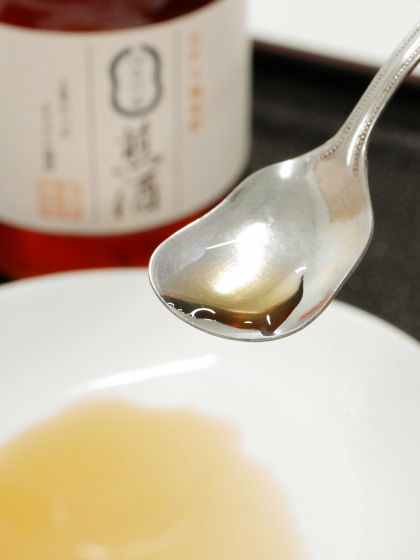
Meanwhile, at the moment of putting roasted sake in Chaya in his mouth I feel the acidity of plum and the strong flavor of soup stock. There is little soy sauce, which is different from ponzu but it is a kind of seasoning.
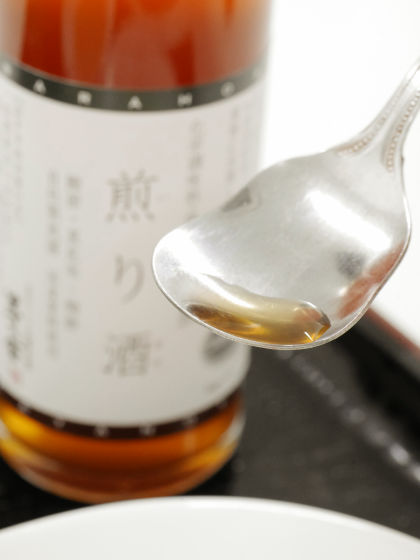
As it was soy sauce, it fits sashimi and tofu, so we actually bought sashimi.
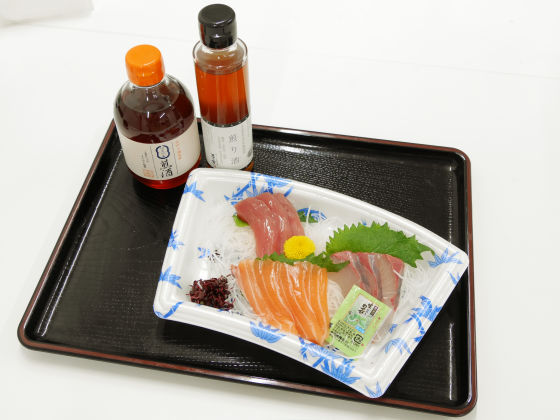
When I tried eating white fish sashimi with roasted sake at Ginza Mikawaya, the sourness that I felt licking as it was losing its presence, in an atmosphere like sweet soup with soy sauce. It is like soy sauce, not soy sauce, but it is different from ponzu, but the roasted sake at Ginza Mikawaya often came with a somewhat light fresh sashimi.
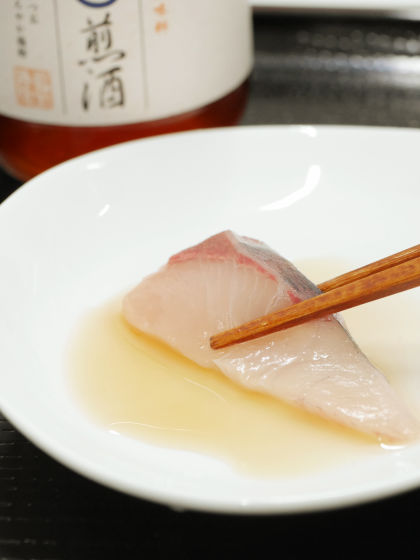
Meanwhile, roasted sake in Kayono has strong flavor of plum and soup, so if you eat it with sashimi you will not lose flavor.
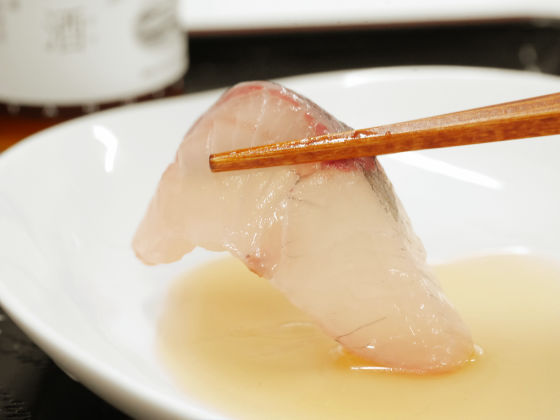
In any case, if it is a fishy fish, the flavor of roasted sake will match, but if it is a fatty fish like salmon, roasted liquor will be losing to the taste of the fish. It is a gentle taste, but it was an impression that Kayono, which is not based on soy sauce, feels the taste of roasted sake more firmly.
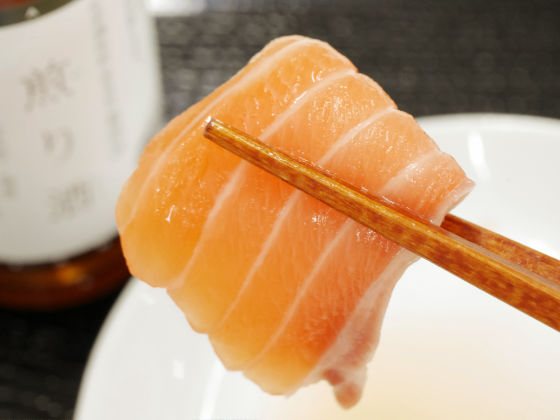
Since I had a comment saying "Is this similar to bonito sashimi?" From the editorial staff I ate, I tried comparing it.

When I tried eating the bonito with the attached sauce, the attached sauce tasted slightly like ponzu.
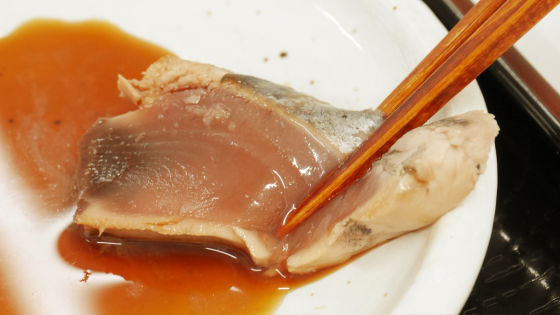
While the sauce included was a sour taste like "vinegar", roasted liquor was felt as a somewhat rounded acidic flavor, as it feels plum flavor. Since roasted sake in Chaya is stronger in acidity, it is close to ponzu but the flavor is different. Both Mikawaya and Chaya were more appropriate for the expression "flavorful" than sauce included.
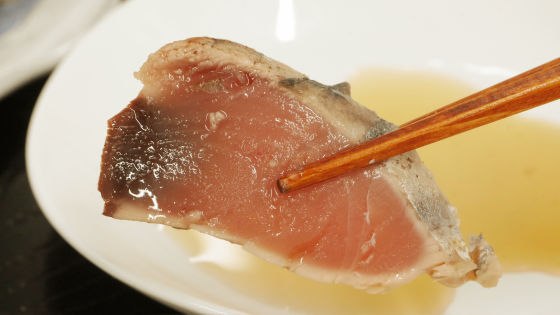
I also tried tofu. Because it is more gentle taste than soy sauce, eat it over plenty.
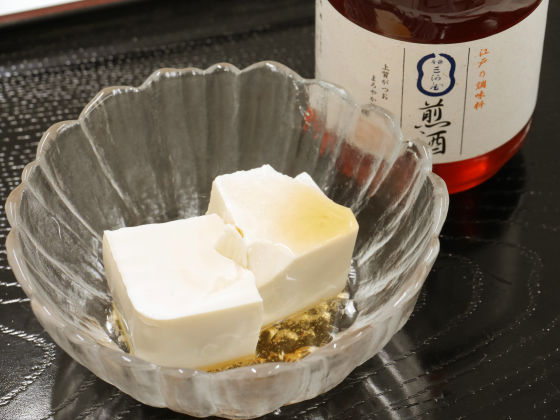
Both of them, you can feel the flavor peculiar to roasted tofu rather than sashimi.
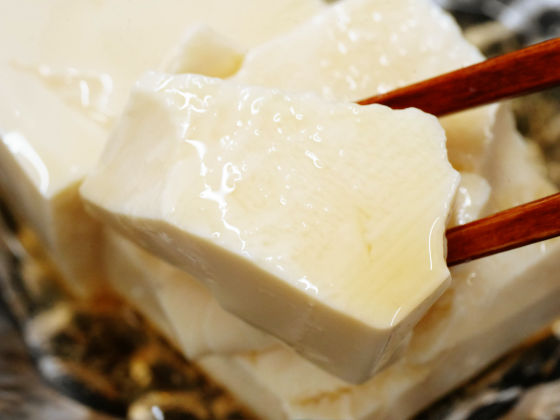
Particularly in Kayonaga there was a strong claim of plum vinegar flavor, a unique scent like alcohol like fermented food was felt. It was popular from editorial staff who ate sashimi · tofu "go on" and "delicious" ......
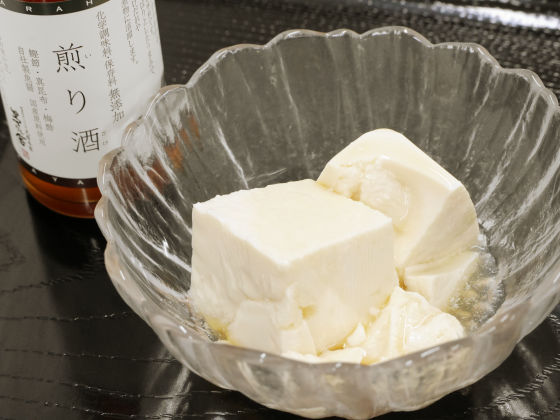
Even using it for egg-caught rice, it was pretty ant.
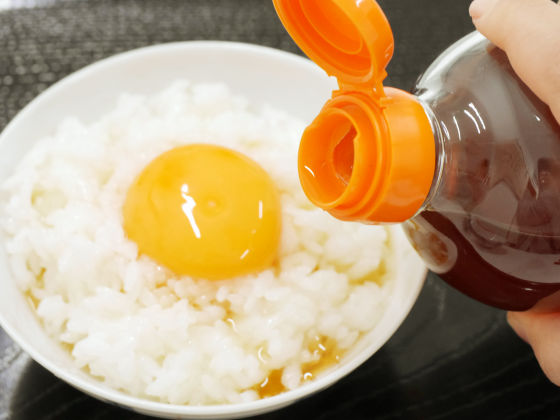
In the case of egg-capped rice, the soy sauce-based Ginza Mikawaya became less conspicuous in acidity, and it was quite good with the feeling of "egg rice cooked with sweet soup with soy sauce". On the other hand, Kayobo has a stronger flavor of soup, and there is also sweet and sourness of plum vinegar, which is a finished finish that "This is something different"! Since it was drawing a line with commercial soup stock, it is recommended that roasted sake at Kayono be challenged if you want to try new taste.
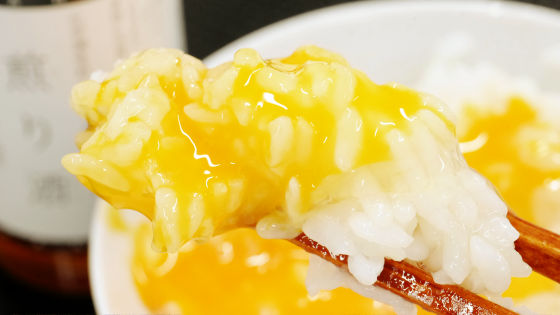
Furthermore, it is a challenge as it can be a simmered dish.Official page of ChayonAccording to 150 ml of water can be simmered with roasted sake of 3 tablespoons.
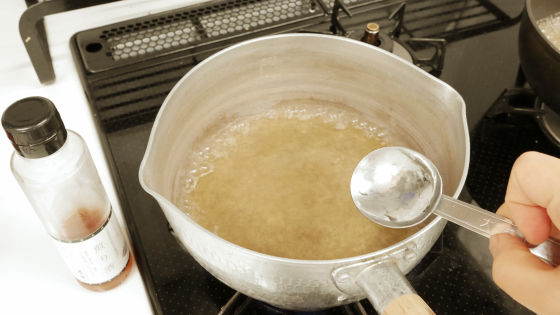
I tried to make boiled potatoes in both Kayono and Mikawaya.
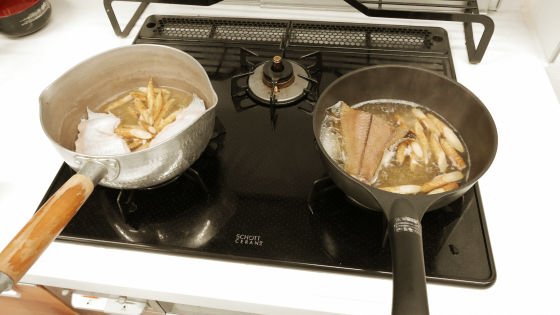
First of all I try to eat it from simmered with roasted sake at Mikawaya.
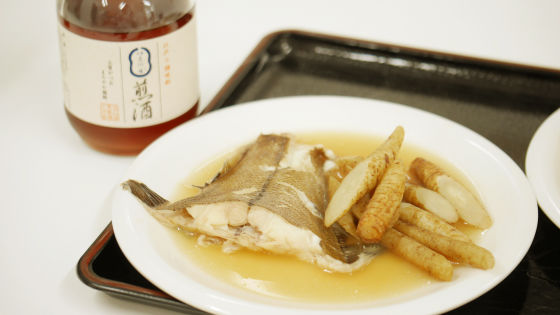
In the case of sashimi is "roasted sake" of Mikawaya which I felt like "it seems not to change so much like normal soy sauce", but when it was simmered, acidity was releasing firmly. As plum vinegar finishes simmered vegetables in a refreshing manner, it contains ingredients of soy sauce, soup and acidity in one seasoning, so it is convenient to determine the taste by one shot even if you do not combine multiple seasonings.
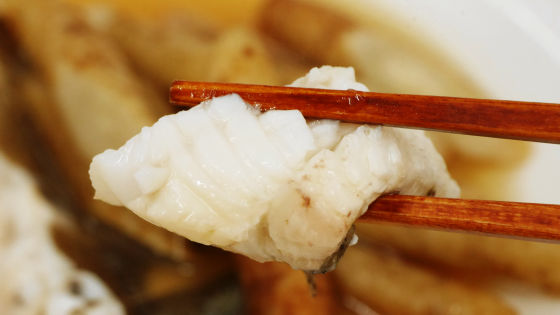
I tried simmering the burdock together, but the sushi seemed firm and delicious.
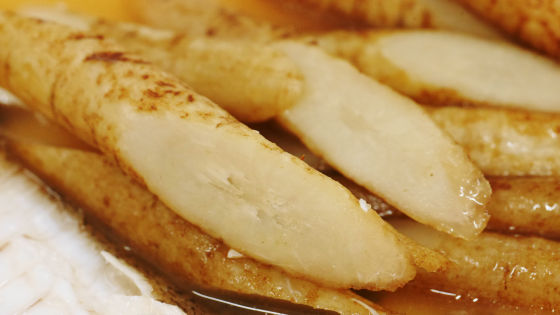
Is Kaiyoh, which is originally strong acidic, more sour? I think that, this time it complements the taste of a fancy Kalei, finished sushi anywhere gentle. The umami was condensed while saltiness was small, and it was an elegant seasoning which felt a fragrance of plum in faintness.

Incidentally, the roasted sake of Mikawaya used this time is 756 yen including tax, 600 ml tax included 1296 yen, roasted alcohol in Kayono is 50 ml, 360 yen including tax, 540 yen including tax, 500 yen including tax, 972 yen including tax It is getting, and if you purchase from the official page, a shipping fee will be charged separately.
Sake (sprinkle) · small - Ginza Mikawaya
http://www.ginza-mikawaya.jp/?pid=19707571
Roasted sake | Chayono | Kohara Honkei Online shop
https://www.k-shop.co.jp/kayanoya/seasoning/irizake/
It is possible to make roasted sake from home from Umeboshi or bonito. So I will report later on how I actually made it so please look forward to it!
Related Posts:
in Gastronomic Adventure, Posted by darkhorse_log
